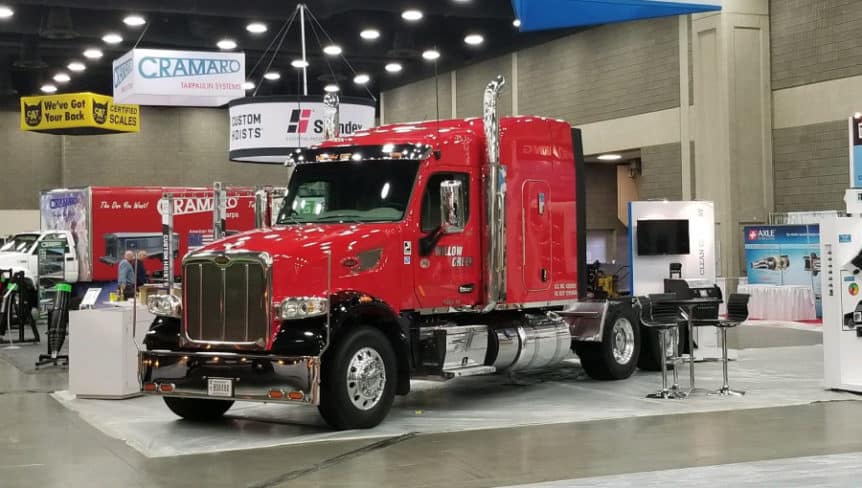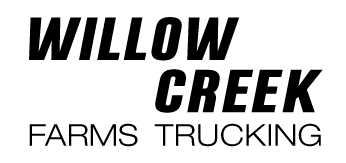
10 Steps to Become a Licensed CDL Truck Driver in the United States
5 Things You’ll Need To Become a Truck Driver (In a Nutshell)
- You’ll need to possess a license to drive a car
- Write and successfully pass the FMCSA exam, plus medical tests
- Write and pass a test to obtain the CDL Learners’ Permit ( needed for initial training )
- Do the CDL exam and obtain your truck driving license
- Get driving experience when you have your CDL, in order to secure a job
Other than having a driver’s license for a car, the training school you choose will provide the means to complete all of the above.
1. Determine Your Eligibility
If you’re between the ages of 18 and 21 you can get a CDL.
You can also operate a commercial vehicle outside of your home state as of your 21st birthday.
You’ll also need a physical and DOT medical card from an examiner listed on the Federal Motor Carrier Safety Administration’s (FMCSR) national registry.
You can find qualified examiners here.
Each prospective commercial driver must also provide the following documentation to prove his or her identity, state of residency, Social Security number, and driver’s history:
- Birth certificate
- Driver’s license
- Social Security card
- Utility bill
- Copy of MVR
If you’ll be attending an out of state truck driving school, you’ll need to ask your recruiter if there are any residency requirements for students in that state.
2. Address Issues That Could Prevent You From Getting Your CDL
Even if you meet the above eligibility requirements however, there are a number of items that could possibly derail your plans of getting your CDL.
They include:
- certain prescription medications
- medical conditions like sleep apnea, high blood pressure and diabetes
- physical handicaps like missing fingers, toes, or limbs
- serious criminal offenses like drunk driving charges
- felony convictions for arson, kidnapping, and extortion
For those with the aforementioned medical conditions and physical disabilities, it may be possible to obtain a written waiver from a physician stating that your conditions won’t prevent you from operating a commercial vehicle safely.
Even for those with checkered pasts, a felony conviction may not be the end of the road.
Drug tests aren’t part of the process of getting a CDL. But they are required when applying for a job as a commercial driver.
Once you’re hired you’ll be subject to random drug testing . If you are involved in an accident, it is mandatory you are drug tested as well.
Many carriers also frequently test drivers who’ve just come back on-duty from vacation or short breaks at home, so casual drug use almost always catches up with you.
Many new drivers take the ‘it won’t happen to me’ approach when it comes to drug testing.
It’s dumb to invest thousands of dollars and months of your time in getting a CDL, to throw it all away for a little casual (and illegal) recreation.
3. Enroll in a Quality Truck Driving School
CDL truck driving schools come in all shapes and sizes.
They range from:
- private training academies and community college programs with dedicated instructors and excellent courses
- to giant CDL driver mills run by mega carriers, many of which churn out minimally qualified steering wheel holders by the truckload.
So choosing a reputable school is important.
4. Get a Copy of the CDL Manual (For your state)
Though they’re pretty standardized these days, CDL study manuals do vary slightly from state to state. Get a manual from the state where you’ll do your training and testing.
You can pick-up a hard copy at the DMV or download a PDF to your computer.
If you do the latter, you may want to print a copy to make studying easier.
If you’ll be attending an out of state school, they may be able to email you a link to the manual they use during training.
5. Complete a CDL Learner’s Permit Application
Students may complete a learner’s permit application online, in-person, or at the truck driving school they’re attending.
In addition to the aforementioned documents, students will also need:
- copy of MVR including complete driving history from all 50 states and Washington DC
- home address
- current driver’s license and information on licenses you’ve had from other states
- alternate proof of identification like a passport, credit card or Social Security card
Students may need to pay the application fee individually if it hasn’t already been included in the cost of tuition.
If possible, it’s always a good idea to fill out your application while at driving school.
They’ll likely have staff familiar with the process, and they can help you with any items you’re missing or are unsure of.
6. Take the CDL General Knowledge Test
After applying and paying for your learner’s permit, you’ll need to pass a general knowledge test.
If you’ve dedicated enough time to studying, you shouldn’t have any problems.
7. Learn, Practice and Study
FMCSR rules state that during their training, students must practice driving with a qualified CDL holder instructing them from the passenger seat.
Private and company sponsored driver training programs are staffed with instructors. But if you’re in a state that doesn’t require formal schooling you’ll need to find a qualified teacher on your own.
Though actual driving time is definitely more exciting, in-classroom learning is just as important.
The classroom portion of training typically lasts about 300 hours in addition to onsite driving and maneuvering practice and that conducted on public roads.
8. Take the Final CDL Tests
To get your CDL and join the ranks of commercial drivers you’ll need to take what you’ve learned on the road and in the classroom and pass these final tests:
- A Vehicle Inspection (Pre-trip Inspection) Test—includes checking things like the engine compartment, tires, suspension, braking system and coupling devices on combination units
- A Basic Controls Test—includes straight line and offset backing, parallel parking, and alley docking
- A Road Test—a driving instructor will evaluate the student’s awareness, overall command of the vehicle, use of mirrors and turn signals, and ability to brake and accelerate normally
- Endorsements – There are some endorsements you can get as well, to increase your opportunities in the trucking industry. (HazMat, Twic Card to name a few)
See our Professional Truck Driver Skills section to reference procedure for some maneuvers.
If you’re attending a school, they’ll schedule the necessary appointments and make sure you have access to the correct vehicle for the class of license you’re getting.
If you’re going for your Class A CDL, you must take the test in a combination vehicle—not a dump truck or a school bus.
For those who are getting your CDL on their own, you’ll need to take care of both of these steps.
Some states may provide test vehicles, so ask before scheduling your appointments.
9. Get Your CDL (And What To Do If You Don’t Pass On the 1st Try)
After passing your final CDL tests with flying colours, you’ll be issued a physical copy of your new license.
If anxiety, pre-test jitters, or a lack of studying kept you from passing, you’ll be able to retake the tests again after a short waiting period.
Be sure to ask about your school’s retesting policy in regard to fees and waiting times between retests.
Some offer unlimited free tries until you pass, others may have additional charges for each attempt after the first test.
10. Getting a Truck Driving Job
Once you have your CDL, you’ll need a job!
If you are in a paid CDL training program, you will have an automatic job placement as a truck driver.
If you have completed the program successfully at a private truck driver training school, the school may have a placement program, with some select trucking companies.
Otherwise, you’ll need to start your job search, if you haven’t already.
There are trucking companies who will train those who possess a CDL, in one of their finishing and training programs.
Typically these programs last from about 2-4 weeks, maybe longer. These are great introductory training programs at your new carrier. They will teach you things you probably didn’t learn in your formal school training.
Your Truck Driver Training Options – A Decision To Be Taken Seriously
There are actually 4 ways to become a truck driver and get your CDL.
It really DEPENDS on you as an individual, which of the options will work best for you.
Once you’ve decided which of the training options you are going after:
- Contact the school or program of your choice.
- Ask tons and tons of questions
- Arrange for a tour of the school, to see the facilities and get a feel for the integrity of the school.
- Take home any information they supply you with and review it carefully before choosing a school. The future of your driving career depends heavily on making a good choice of schools.
Compare your findings on the various schools and programs, to pick the best CDL school to suit your needs. Your future professional truck driving career depends on it.
The Importance of Choosing The Right CDL School
I cannot stress enough the importance of choosing the right CDL school.
In order to get your truck driving career started off on the right foot, it’s critical that you choose the right type of CDL training that suits YOU.
- You can be a truck driver in as little as a few weeks time or the training program can take up to a year, depending on the training program you choose. But, you may not have the time to spare so getting your CDL asap may be in order.
- Maybe you don’t have the extra money kicking around to invest in costly tuition for a training school, nor do you qualify for any financial aid.
- Maybe the location of the school is an important factor for you for personal reasons.
- Or perhaps you need an income sooner rather than later and you need that CDL in your hands like NOW.
So here’s the deal.
It’s critical to pick the right training program to suit YOU and your needs.
You need to know:
- How much time you want to spend in a training school.
- How much money you have to spend on training.
- Where you wish to attend training.
- How quickly you wish to get behind the wheel as a qualified CDL driver
THEN, you’ll need to choose one of the types of training available.
